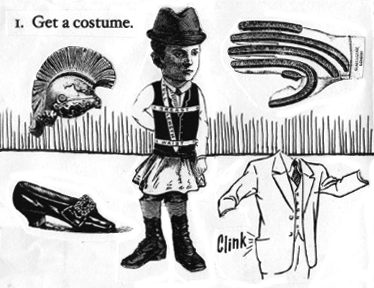Robert-Houdin
Art is the lie that tells the truth.
Pablo Picasso
One of my FIMP books from 2001 was "How To Be A Magician In 3 Easy Steps":



Consistent with every other FIMP "how to", you learn nothing of value relative to the title of the book, of course. But I've long thought that art and magic have a lot in common. There is the shared quality of being activities that require the mastery of a unique set of skills to produce a result with no real practical value, but more important to me is the role of the viewer in both cases.

Mark Tansey. The Innocent Eye Test. 1981.
I'm not really talking about the piece of conjuring that Mark Tansey illustrates above, a painting that creates a representation of a thing so "true to life" that it could be confused for the thing itself. I'm talking about the magic trick of convincing an audience that this thing you have made is somehow important and meaningful, that you have taken base materials and through some strange alchemy in the studio created "art". It's really the audience, and not the artist, that takes that object and makes it art.

Marcel Duchamp. Fountain. 1917.
Marcel Duchamp really taught us this lesson in 1917 with his sculpture "Fountain". With this "readymade" (his term for a sculpture composed solely of a found object displaced from the real world and placed into the realm of art), he declares that an artwork is anything an artist says it is. This, of course, leads you to the question, "well then, who is an artist?" I'd say, an artist is anyone the audience (ultimately) says it is. If the book above were "How To Be An Artist In 3 Easy Steps", the hopeful reader might get a costume (I'm an artist!), learn how to do odd things in ways that baffle and amaze people (I made this show full of really exciting stuff!), and then try to find an audience that finds that stuff baffling and amazing. Without that audience, it's just a pile of stuff. With that audience, it's art.
So, anyway, this piece by Damien Hirst that everyone's already probably seen by now:

Damien Hirst. For the Love of God. 2007.
a skull cast in platinum and encrusted with 8601 diamonds, that cost him $20 million to make, is so lacking in magic. The only part of this piece that seems to attempt to baffle and amaze is the pile of money that went into making it. It strikes me as sort of a dodge - a way to avoid all of those messy attempts at meaning, or even novelty, and replace them with an astonishing price tag. You'd think that with my Zero Sum Art Project, and its obsessive recording of every cent spent along the way to making the objects being sold, that I would find Hirst's transformation of $20 million dollars into $100 million dollars more interesting. But I just can't.
What I really want to see is an artist taking an ordinary deck of cards and doing something astonishing with them. Speaking of which, here's one of my heroes, Ricky Jay, doing just that:
When we watch a masterful magician work, we know we're seeing deceptions, but we want to see magic. And we see magic. When we look at an artist's work, we want to see art. And we see art.

No comments:
Post a Comment